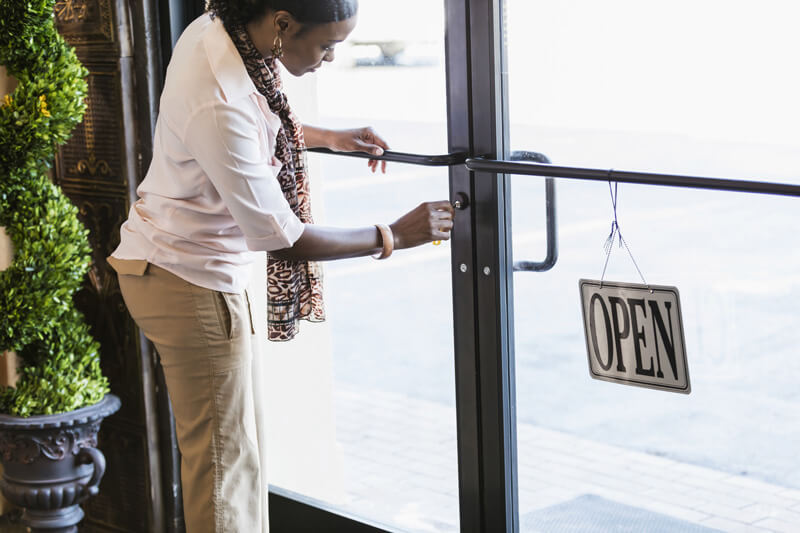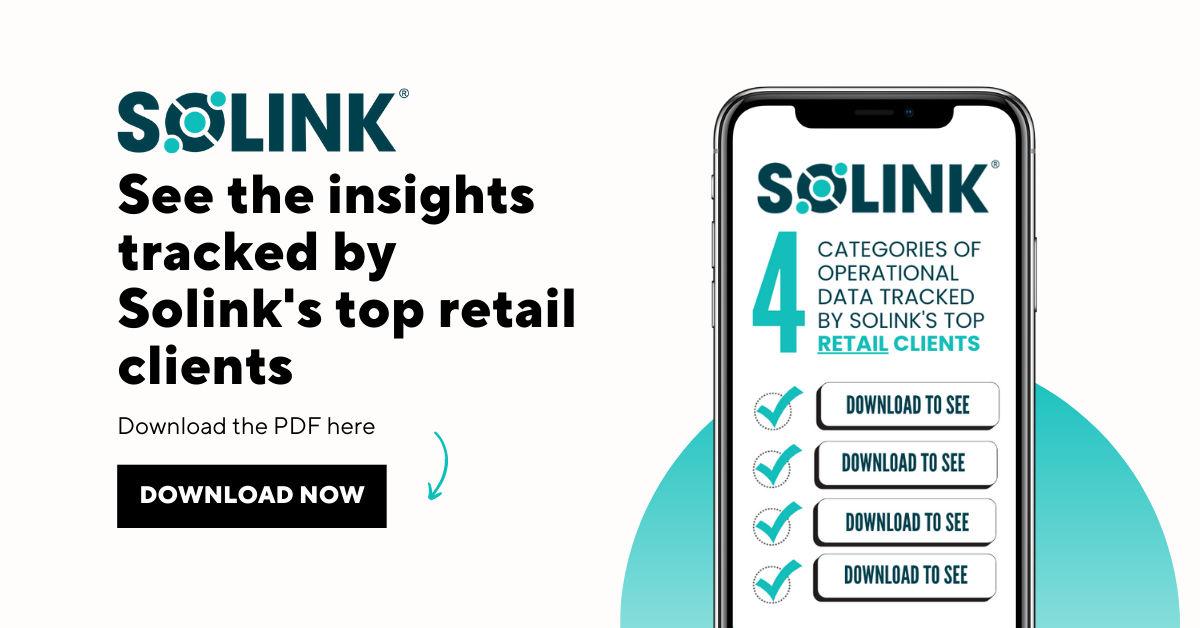Table of Contents
Table of Contents
Closing a retail store properly keeps your business secure, organized, and ready for the next day. A consistent closing a retail store procedure ensures employees follow the right steps, preventing mistakes and reducing risks. This checklist covers the essential tasks to lock up safely, balance registers, and leave your store in top shape every evening.
What is a closing procedures checklist
Just like an opening checklist, a store closing checklist is an indispensable tool for successful retail operations. This list of tasks helps you cover all bases, ensuring that you leave no room for errors or security lapses. A comprehensive checklist makes the store closing efficient and hassle-free.
Closing your store isn’t just about locking up. It’s about taking stock of the day’s operations, from inventory and sales to staff performance. A structured checklist allows for a systematic approach to these crucial tasks. Moreover, integrating Solink into your closing routine provides additional security and valuable business insights.

Every essential tasks for your closing a retail store procedure checklist
Closing a retail store each night might seem like a straightforward task, but the process entails a lot more than simply locking up and turning off the lights. A comprehensive closing checklist for a retail store is a vital tool for streamlining operations, enhancing security, and preparing the store for the next business day.
This guide outlines 32 essential tasks across various categories that should be a part of your routine. Following this checklist can help you close your store efficiently while mitigating risks and setting the stage for another successful day of business.
Security checks
When it comes to closing your retail store, security should be a top priority. As the store empties and the lights dim, it’s critical to ensure that all entry points are properly secured to prevent unauthorized access. A comprehensive cloud-based security system, like the one offered by Solink, adds an additional layer of protection. Solink’s cloud video security system is robust and can be easily integrated into your daily security procedures, ensuring a safe and secure retail environment.
- Arm security system: Activate the alarm system to safeguard the premises. You can set up a schedule for your Solink Video Alarms to automatically arm every night.
- Lock all entry points: Make sure all doors, windows, and other entryways are securely locked.
- Confirm security cameras are operational: Verify all security cameras are functioning and recording. Solink performs automatic health checks to make sure your cameras are always unobstructed and recording.
Lights and temperature
As you close down for the day, controlling the lighting and temperature becomes a crucial part of your energy-saving strategy. Proper management not only saves on operational costs but is also a responsible environmental practice. Ensuring that you are using energy-efficient settings can make a significant difference over time.
- Turn off unnecessary lights: Save energy by turning off lights that aren’t needed overnight. Use Solink to audit thousands of stores for compliance in minutes.
- Adjust thermostat to energy-saving mode: Lower the thermostat to a setting that conserves energy.
- Test emergency lights: Ensure that emergency lighting systems are operational for safety reasons.
Inventory management
Accurate inventory control is a cornerstone for any successful retail operation. The end of the day is an excellent time to take stock, literally and figuratively. Ensuring you have an accurate count of goods can inform reordering strategies and also acts as a loss-prevention mechanism.
- Perform inventory checks: Count the remaining stock for the day.
- Update POS system: Update any changes in the inventory in the Point of Sale system.
- Prepare list of items to reorder: Make a list of products that need to be reordered.
Staff preparation
Efficient closing procedures require a team effort. It’s important that each staff member understands their role in the closing process. Briefing the team about the day’s sales, any customer complaints, or other significant events can provide valuable insights for improving future operations.
- Assign closing duties: Make sure each staff member knows their specific responsibilities.
- Review day’s performance: Discuss the sales performance and any customer feedback.
- Thank staff: Make sure your staff feels appreciated.
- Clock out: Ensure all staff members clock out before leaving to prevent time theft.
Equipment shutdown
The machines and equipment used throughout the day also need proper shutdown procedures. Improper shutdown can lead to wear and tear or even damage. Plus, powering down machines can result in energy savings.
- Close cash registers: Secure the day’s earnings and shut down registers.
- Turn off scales: Power down weighing scales used in the store.
- Shut down scanners: Turn off barcode scanners to save energy.
Store cleanliness
Ensuring that the store is clean at the end of the day is not just about aesthetics; it’s also a health and safety requirement. A clean store is more inviting for customers and creates a better work environment for employees. It also prevents shoplifting.
- Mop floor: Clean the floors to remove any dirt or spills.
- Wipe down counters: Sanitize counters where transactions are made or goods are displayed.
- Dispose of trash: Empty all trash cans and replace bags with fresh liners.
Customer experience
Your store might be closed, but the impression it leaves should always be open for positive reviews. Signage, music, and overall ambiance contribute to customer experience, and these elements should be updated or stored safely for the next business day.
- Remove dated signage: Take down any promotional signs that are no longer applicable. This is an important part of reducing operational shrink.
- Turn off music and PA system: Power down audio systems to save energy.
- Clean fitting rooms: Ensure fitting rooms are clean and free of merchandise.
Financial wrap-up
As you close down, financial reconciliation becomes a pivotal activity. Securely storing cash and other forms of payment is crucial, as is preparing deposits and reviewing the day’s financial transactions.
- Count cash in register: Tally the cash to account for the day’s sales according to proper cash handling procedures.
- Prepare bank deposit: Secure cash and prepare it for bank deposit.
- Review daily sales data: Analyze sales figures to understand the day’s performance.
Pre-closing review
The final moments before locking up offer a chance to ensure that no stone has been left unturned. A comprehensive walk-through can serve as the last line of defense against any oversight, ensuring that you’re not missing anything crucial before leaving for the night.
- Final walk-through: Walk through the entire store to confirm that all tasks are completed.
- Team debriefing: Have a short meeting with the staff to review any last-minute details.
- Lock up: Secure all doors and activate the alarm system.
Miscellaneous
Sometimes, there are tasks that don’t neatly fit into any category but are equally important. These might include administrative activities, like data backup and system updates, which are crucial for smooth operations.
- Test Wi-Fi: Ensure the store’s Wi-Fi is functional.
- Review return/exchange policy: Confirm that return and exchange policies are up-to-date and clearly posted.
- Check for hazards: Make a last check for any safety hazards, like wet floors or obstructed exits.
Make Solink part of your retail store closing checklist
Incorporating Solink into your closing routine can elevate your store management to a new level. With features like cloud video security, you can ensure your store remains secure even when you’re not there.
To see how Solink can help your retail business, sign up for a demo today.

